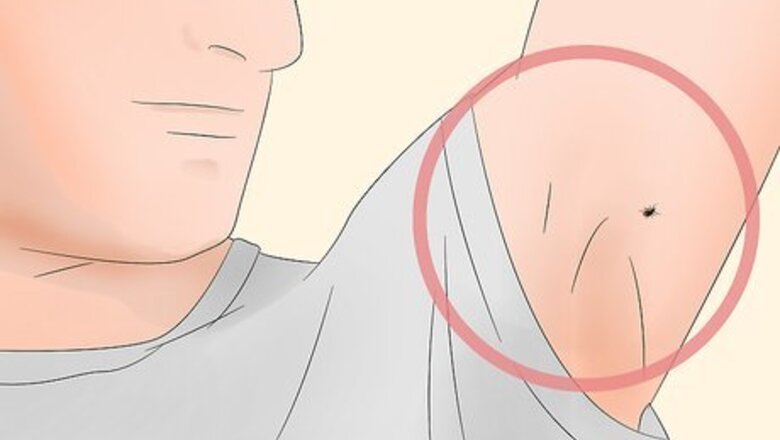
views
Recognizing Tick Bites
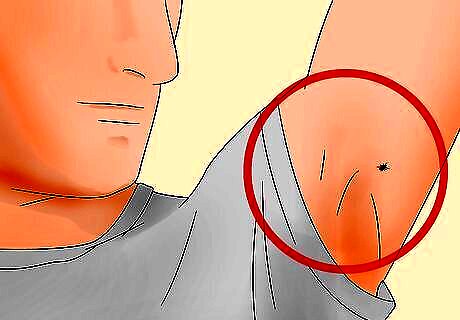
Inspect your groin, armpits, and other warm areas of your body for ticks. If you’ve been hiking or backpacking in a tick-friendly habitat (e.g., a forest or grassy meadow), take 15 minutes to check for ticks once you’re back home. Since ticks are not likely to bite you on open, exposed patches of skin (e.g., your arm or back), pay special attention to warm, moist areas of your body. This includes your armpits, groin, and buttocks. For the sake of convenience, check yourself while you’re in the shower or bath. If you hiked, camped, or backpacked with your child, inspect their body for ticks (or, for older kids, ask them to check themselves).
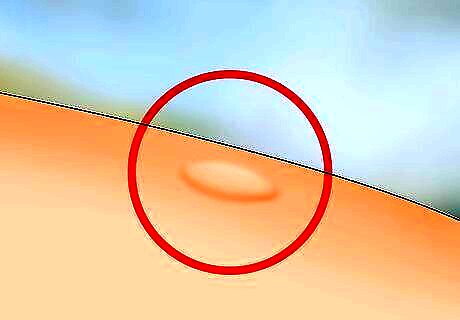
Look for tick bites that resemble a flat, pale mosquito bite. Tick bites typically don't swell up to the size of a spider bite or a mosquito bite and don’t take on a distinctive red color. All you’ll be able to see is a fairly nondescript puncture mark or what looks like a tiny sting on your skin. In most cases, tick bites go unnoticed. Unless the tick is still attached to your body, tick bites are notoriously difficult to spot since there isn’t any pain or itching.

Notice if the bite turns red and grows into a small bump. On some people’s bodies, a tick bite will develop into a small, red bump that’s between 1–2 inches (2.5–5.1 cm) in size. There may be a light-red circle around the bite as well. Keep an eye on the bump for 48 hours after you notice it. In most cases, the bite will not grow but will stay the same size. As long as the red bump doesn’t turn into a large rash, don’t worry. The bite is not infected. If you notice a rash that looks like a bulls-eye, a widespread rash, joint aches, headache, fatigue, or chills, then it’s possible that the tick transmitted Lyme disease to you.
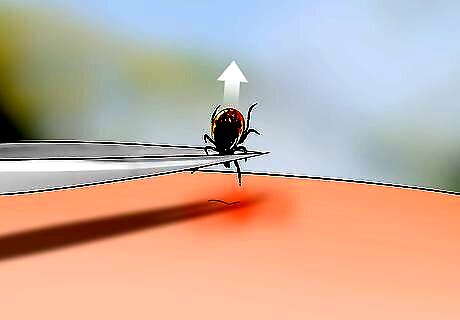
Remove a tick if you find one attached to your body. If the tick is still attached to your body, it will look like a small fleck of dirt. Ticks are a little tricky to remove from your body. They don’t just bite you, but they bury their entire head inside of your body. Don't worry; being bitten by a tick is usually worse than it sounds! To remove a tick, grasp its head as close to your skin as possible with a pair of tweezers. Use steady, gentle pressure to pull the tick straight out in a direction perpendicular to your skin. Flush the tick down the toilet. Then, wash the area with soap and water. Don’t compress the tick’s body since it can force harmful fluid through the tick’s mouth and into your body. Don’t use a forceful twisting or jerking motion since you could leave the tick’s head embedded in your skin. Some people find ticks to be a little gross. Fortunately, though, their bites aren't painful at all. If you feel a little squeamish about removing the tick, ask a friend or family member to help you. Never grab the tick by its body. The tick’s body can separate from the head, and the head will remain embedded in your skin. If this happens, you'll just have to wait for your body to push the tick's head out.
Spotting Signs of an Infection
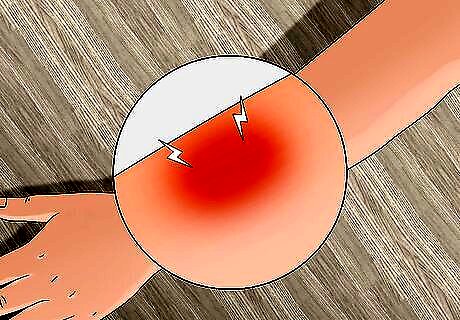
Pay attention to any swelling, itching, or pain around the bite mark. Once you’ve found a tick bite on yourself, monitor it daily for any signs of an infection that was passed on from the tick (e.g., Rocky Mountain spotted fever). Even if the tick did not transmit Lyme disease to you, it could have transmitted one of many other illnesses that ticks commonly carry. If the bite starts to turn red and swell up, there’s a good sign that you’re infected. The bite also might feel hot or itchy. While this can be a sign of an internal infection, it can also indicate that you’re allergic to the tick bite. Signs of an infection typically take a few days—or even as long as a month—to appear.
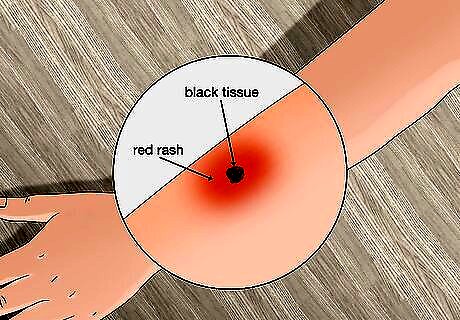
Look for a red rash and black tissue surrounding the site of the tick bite. In rare cases, a tick can pass along a strain of bacteria called Rickettsia. If you’ve been infected with the bacteria, the symptoms will typically begin to emerge a few days after the tick has dropped off of your body. The blackened tissue may be as small as ⁄8 inch (3.2 mm) in diameter, while the surrounding rash can cover up to 1 inch (2.5 cm) of skin. If you see black tissue around the location of a tick bite, visit your doctor immediately. Rickettsia bacteria can cause potentially life-threatening conditions including African tick-bite fever and Rocky Mountain tick-bite fever. These conditions can be treated with antibiotics.
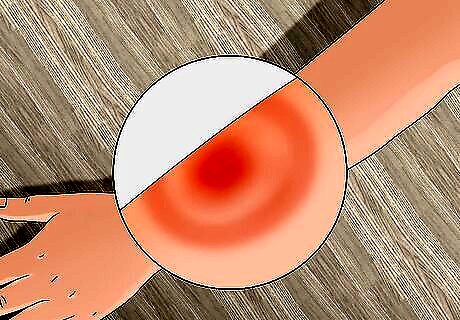
Check for a bull’s-eye pattern, which indicates a Lyme-disease infection. If a tick transmitted Lyme disease to you, the bite will take on a distinctive visual pattern. A circular rash—known medically as erythema migrans—will form around the bite. The rash can become as large as 12 inches (30 cm) in diameter. The center of the rash is often not red, creating a bulls-eye pattern. The bull’s-eye pattern may also have multiple concentric rings of swollen, red tissue. The rash that accompanies the bull’s-eye pattern isn’t typically painful or itchy. However, if you lay your hand on it, it may feel warm to the touch.
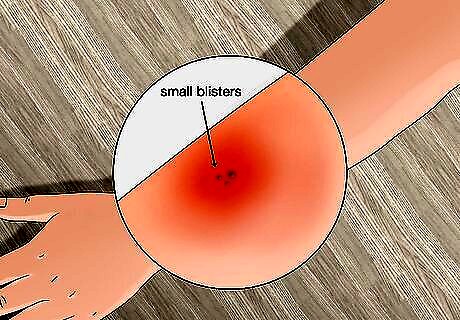
Suspect Lyme disease if small blisters appear around the tick bite. If a tick has transmitted Lyme disease to you, small blisters may appear at the center of the rash (whether or not the rash appears in a bull’s-eye shape). The blisters are small. Each may only be 1–2 millimetres (0.039–0.079 in) in diameter. Lyme disease incubates relatively slowly in the body, so you might not notice blisters appearing on the rash for weeks after you were bitten. Avoid scratching or breaking open the blisters.

Pay attention to any other common symptoms of Lyme disease. An inflamed rash is not the only symptom of Lyme diseases. If you have been bitten by a tick and experience fever, chills, headache, or a stiff neck, you may have been infected with Lyme disease. Other symptoms include swollen lymph nodes. If it’s left untreated for months, Lyme disease can cause severe joint pain and even temporary facial paralysis. Visit a doctor if you notice any of these symptoms. Lyme disease diagnoses are most common in the summer (since ticks are most numerous and most active when it’s warm outside), but ticks can bite any time of the year.
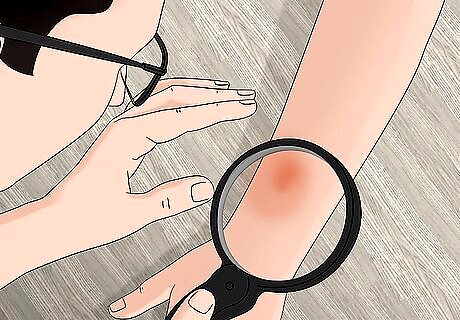
Visit your doctor if you notice any signs of infection around tick bites. Tick bites are not a big deal unless the tick transmits an infection. If you notice any signs of infection, visit your general practitioner as soon as possible. Describe your symptoms and let the doctor inspect the tick bite. Ask the doctor about prescription antibiotics to treat the infection. Also tell the doctor how long ago you were bitten by the tick. If you don’t know exactly what day you were bitten on, provide a reasonable estimate. Follow up with your doctor if you develop a widespread rash over the next 30 days after removing the tick. Pay attention to any flu-like symptoms you have since they could be signs of Lyme disease.
Preventing Tick Bites
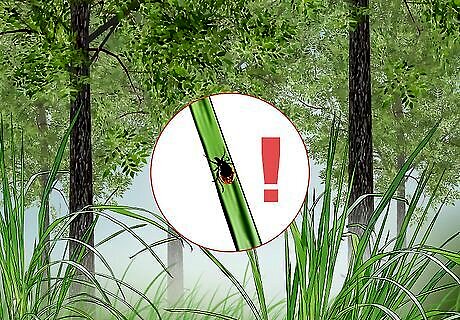
Identify humid and forested habitats where you’re likely to encounter ticks. Ticks love to hang out in moist, humid environments, especially within densely forested areas or meadows with high grass. If you’re concerned about tick bites, either avoid these types of habitats or take precautions when you enter them. Within the U.S., ticks occur in every state except for Alaska, although they’re more densely populated east of the Mississippi river. If you live in a wooded area, you could even be bitten by a tick in your own backyard.
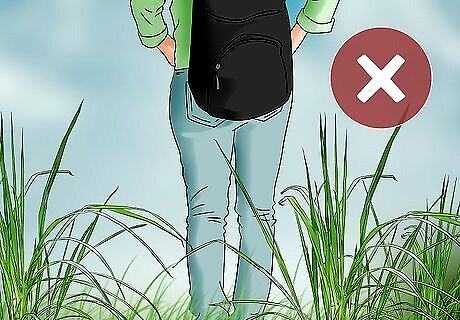
Avoid direct contact with trees and grass while hiking. Ticks latch onto your clothing, hair, or skin when you brush against a tree branch or grass stalk that they’re clinging to. So, when you’re hiking, stick to the center of paths and avoid breaking new trails through dense underbrush. If you’re planning to sit on the forest floor, lay down a tarp first so you’re not seated directly on the ground. Shake off the tarp when you pick it back up to dislodge any ticks that might’ve climbed aboard while it was on the ground.
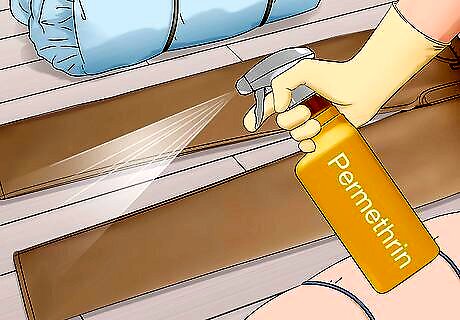
Treat outdoor gear with Permethrin to prevent ticks from climbing on. When you hike, backpack, or camp in tick country, always wear long pants, long sleeves, and close-toed hiking shoes. Before you leave the house, spray a coating of Permethrin over the outer surfaces of the clothes. Permethrin is a highly effective insect repellant that will kill ticks as soon as they latch on to your clothing. Allow 4–5 hours for the spray to dry on the clothes. Several different companies manufacture Permethrin sprays. It’s typically sold at outdoor-supply stores, although you can also find it at large home-improvement stores.




















Comments
0 comment